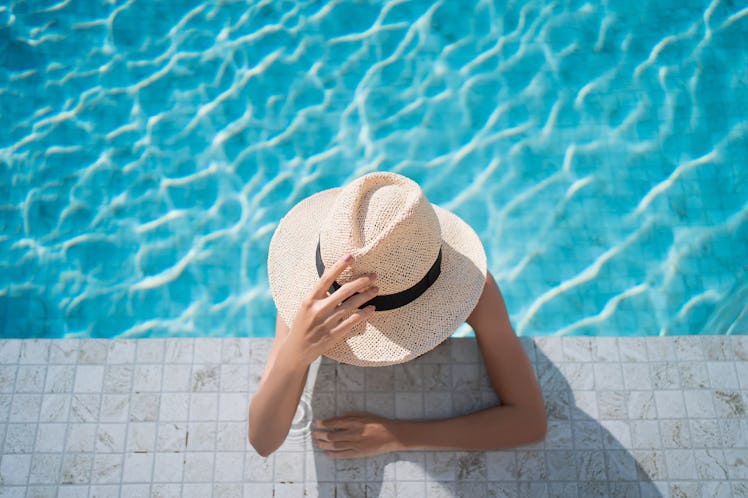
Here’s What Matters Way More Than The SPF Number On Your Sunscreen
Don’t be fooled by a high SPF.
If you've been watching the UV index, then you know we're pretty much into tanning time. With summer now in full swing (even if the weather doesn't always show it), it's imperative that, no matter how much you're dreaming of sun-kissed selfies, you still protect your skin whenever you're outside. Between sunburns and risks of skin cancer down the line, you may be (or at least, you should be) in the market for a heavy-duty sunblock. But before you reach for levels in the 100s, does a high SPF like SPF 100 even work? Dermatologists have, sometimes, offered conflicting feedback, although most have a general consensus.
Prolonged damage and exposure to UV rays have been proven to greatly heighten the risk of getting skin cancer. But while staying out of the sun from 10 a.m. to 4 p.m. and not doing recreational outdoor activities like going to the beach or park are ways to help avoid the sun's harmful rays all together, you and I both know you're not going to spend all of your summer in the shade. That's where these high-SPF sunscreens come into play, you would think. However, the last thing you want is to feel protected when, in fact, you're not.
According to dermatologists, achieving solid sun protection is not always about a high SPF as much as it's about how you apply your sunscreen. "SPF 30 already protects your skin from 97% of UVB rays, SPF 50 protects from 98% and SPF 100 against 99%, so the numbers are really arbitrary," Dr. Orit Markowitz, board-certified dermatologist and founder of OptiSkin, tells Elite Daily. As SPF 100 blocks out only 2% more rays than SPF 30 — and still should be reapplied liberally every two hours — Dr. Markowitz doesn't believe the higher SPF is all that necessary.
"Most SPF 100s are chemical sunscreens, and in order for a brand to get the SPF 100 label, they are using more chemicals that are actually reducing the effect on the SPF," Dr. Markowitz continues. So, despite the number, the "stronger" sunscreens may still be on par with lower SPFs, and a higher SPF doesn’t exempt you from needing to reapply every two hours.
We only include products that have been independently selected by Elite Daily's editorial team. However, we may receive a portion of sales if you purchase a product through a link in this article.
Instead, Dr. Markowitz suggests you should be more concerned about the vehicle with which you're applying your sunscreen. "A spray sunscreen does not provide as much protection as a lotion ... sprays are very thin vehicles and sweat off more easily than a thick lotion," she says. It's much more worth it, in Dr. Markowitz's opinion, for you to opt for a thick, mineral lotion with an SPF of 30 rather than a spray SPF 100 sunscreen.
You’ll also want to be stricter about how much sunscreen you apply at one time. According to the American Academy of Dermatology Association, people typically apply a quarter to half the amount of sunscreen humans actually need. The average adult should actually be applying enough sunscreen on their body to fill a shot glass. You should also be careful not to forget commonly missed areas, like the tops of your hands, the tops of your ears, the tops and bottoms of your feet, and your lips.
Overall, the best sunscreen you can use offers broad-spectrum UVA and UVB protection and is the one you’ll actively use every single day. Worry less about how high or low the SPF is and more about choosing a thicker formula, applying liberally, and reapplying consistently.